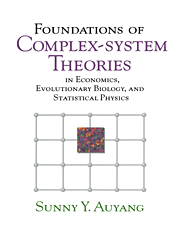Book contents
10 - Directionality, History, Expectation
Published online by Cambridge University Press: 11 May 2010
Summary
Causality and Temporal Asymmetry
Mechanical processes lack a preferred temporal direction. Directionality appears in thermodynamic processes, which nevertheless have neither past nor future. Evolution is a historical process in which past changes are frozen into the structures of present organisms. Economic agents use the capital accumulated from the past and determine their action according to their expectations of the future. As dynamic processes become more complicated, so do the corresponding concepts of time.
There are hardly any phenomena more obvious than the temporal asymmetry of almost all processes we live through and observe. Moving things slow because of friction but do not spontaneously accelerate; we have memories of the past but only expectations for the future. Does the temporal asymmetry merely reflect our own life process and the processes familiar to us, or does it have a more objective grounding?
This section considers the objectivity of a global temporal direction. A particular kind of irreversible process has a temporal direction, but there are many kinds of irreversible processes. Physicists alone talk about at least four “arrows of time”: quantum, thermodynamic, electromagnetic, cosmic. More arrows occur in other sciences. The relations among the various temporal directions are not clear. Can they be harmonized objectively and not merely conventionally into a global temporal direction, which can be briefly called the direction of time? Failing that, can we find some kind of pervasive and irreversible process to serve as a standard direction?
- Type
- Chapter
- Information
- Foundations of Complex-system TheoriesIn Economics, Evolutionary Biology, and Statistical Physics, pp. 313 - 340Publisher: Cambridge University PressPrint publication year: 1998



